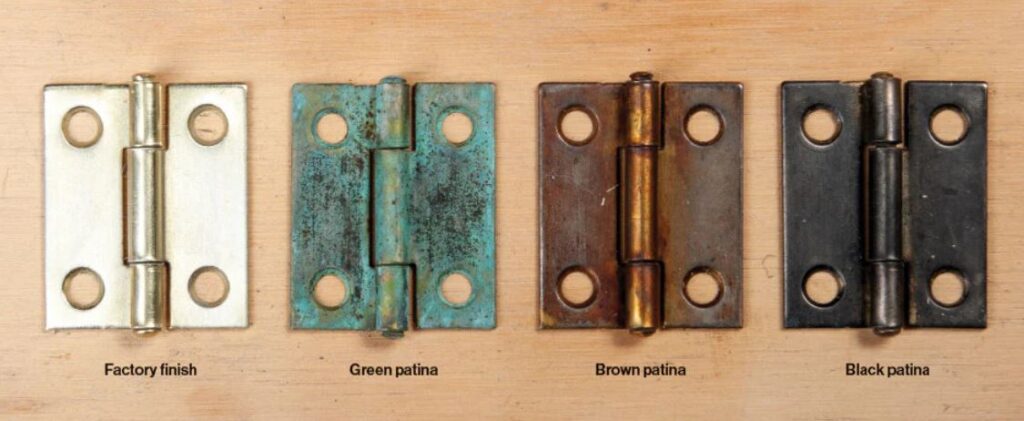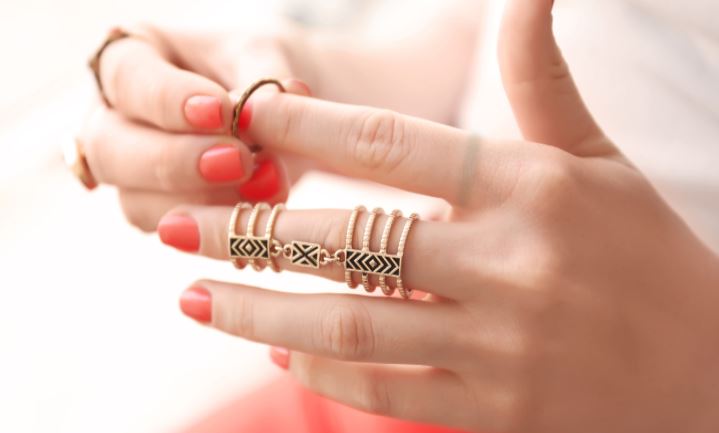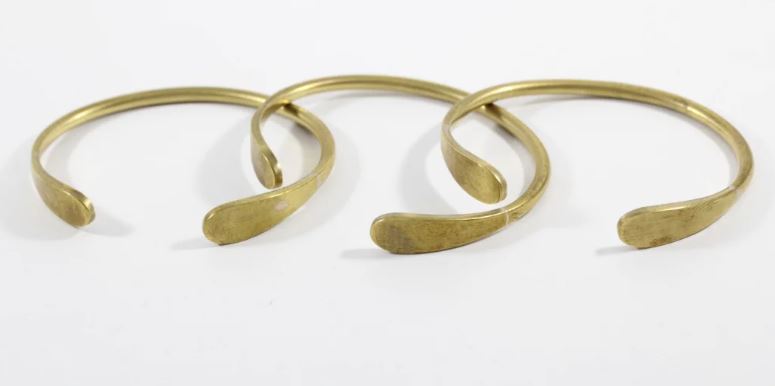How to Clean Brass Jewelry
Have you ever wondered why your brass jewelry gets dull and dimmer after some time of wearing? Has it ever happened to you? If yes, then you are at the perfect place to find out how to clean brass jewelry and how to prevent brass from tarnishing.
Copper Tarnishing is a chemical process in which copper of brass (since it is an alloy) forms a protective layer of unwanted chemical compounds. This mainly happens when it comes in contact with atmospheric air containing Carbon Dioxide and water. Since, this newly formed layer is less reflective, your brass jewelry appears dimmer and duller.
That’s why we can say Yes, water tarnishes your brass jewelry after some time of exposure.
Does Brass Jewelry Tarnish
Yes. The main cause for the tarnishing of brass jewelry is the presence of copper in it. Copper is a reactive metal which reacts with atmospheric moisture and sulfur compounds to form to unwanted chemicals leading to tarnishing.
What Tarnishing does to your brass jewelry?
Tarnishing can affect your brass jewelry in many ways.
- Tarnish Formation: Water accelerates the oxidation of copper in brass, leading to the formation of a dull, discolored layer known as tarnish.
- Green Patina: Prolonged exposure to water, especially with minerals or chemicals like chlorine, can result in the development of a greenish patina on brass jewelry.
- Surface Discoloration: Immediate contact with water can cause brass jewelry to lose its shine and appear dull or cloudy.
- Long-Term Damage: Continuous exposure to water can weaken the structural integrity of brass, potentially leading to corrosion and pitting.
- Maintenance Challenge: Requires regular drying and proper storage to prevent water-related tarnishing and maintain the jewelry’s appearance and durability.

Does Brass Turn Green
Yes, brass does turn green when exposed to atmospheric conditions for a long time. This greenish layer is called patina formation and is different from tarnishing.
Tarnishing only involves formation of a colorless layer formation whereas in patina formation, a green colored layer is formed over metal. Less exposure to humid conditions stops turning to green whereas cleaning the brass regularly and taking care of it will help to maintain its brightness.
How Long does it take for Brass to turn green
Since brass is mainly made up of copper, it is the main element that causes overall look of brass to tarnish. A brass jewelry can easily be tarnished with 5 to 7 days of regular exposure whereas it could take a long time to turn green.
Tarnishing causes brass to appear dull while patina formation causes it to become green. On an average it takes round 5 to 10 years of non-cleaning for brass to turn green naturally. It must be noted that patina can be formed artificially through chemicals.

Does Brass Turn your Skin Green
Yes, indeed brass can turn your skin green in no time. Common cause for it is a chemical reaction which take places between brass and soap or lotion absorbed into your skin. While it can embarrassing at times, there are certain measures to be taken explained in the next section.
Does Gold Plated Brass Tarnish
Gold plated brass can easily be tarnished if gold plating gets thinner or is removed due to causes like scratching. It gets your brass exposed to atmosphere containing carbon dioxide and moisture causing tarnishing. It can be avoided if you take care of your jewelry properly and keep it safe from scratching.

Factors Contributing to Brass Tarnishing
The primary cause of tarnishing is exposure to the air. The reaction between brass and oxygen leads to its oxidation. Water also contributes to tarnishing.
Minerals and chemicals in water, like chlorine and salt, can react with brass. This reaction accelerates the formation of a greenish patina. Sweat and oils from the skin can also cause brass to tarnish more quickly
1. Exposure to air and oxidation
Exposure to air causes brass to oxidize. The copper in brass reacts with oxygen, forming a dull layer. This layer is known as tarnish or patina.
Pollutants in the air can speed up oxidation. Sulfur compounds, for example, make tarnishing happen faster. Regular cleaning can help reduce tarnish buildup.
2. Contact with water
Brass jewelry tarnishes when exposed to water through a reaction involving oxygen from the water and copper from the brass since the latter forms copper oxide upon contact. This is what causes the metallic to become dull and discolored as observed in tarnished brass pieces.
The minerals and chemicals in water such as chlorine and salt might accelerate the tarnishing process. In tap water, there is also chlorine that can combine with brass and thus make it tarnish faster.
3. Human factors
The human body produces sweat and oil, both of which can cause brass jewelry to tarnish. Sweat has salt and acid, which makes it such that copper in a brass chain oxidizes quickly leading to stains. Such elements accumulate on the jewelry’s exterior after some time.
Being of the cosmetic product category and same as the perfumes category, they damage brass too. What happens is that the ingredients found in most of these products could react with the brass such as alcohol and acids leading to generating patina.
In order for this not to happen it would be recommended that one takes off any brass jewel before they apply any cosmetics or perfumes on them as well as making sure they clean them thoroughly occasionally so as to rid any dirt left behind which could cause them rust.
How to Clean/Polish Brass Jewelry
So we have learnt about how to prevent brass from tarnishing, now is the turn for how to clean brass jewelry. As with all types of jewelries, avoid using alcohols, acids or other harsh chemicals for cleaning purposes.
Take the following steps for an effective cleaning of your brass jewelry.
1. Take some warm water in a water tub of warm and add some mild soap in it.
2. Dip your brass jewelry in it for about 15 to 20 minutes.
3. Now take a clean toothbrush dedicated for jewelry cleaning purposes, and start rubbing it on jewelry gently. This will make your brass shine like a new one.

In case your brass jewelry is tarnished as well, apply some baking soda on brass and rub it with a tooth brush. Rinse it immediately once tarnished is removed followed by cleaning with a soft non-abrasive cloth.
How to Stop Brass from Turning Skin Green
As brass can turn your skin green, there is an immediate need for understanding that how you can stop it. Tarnishing is a natural process where you can only do measures to stop it from happening. Once it has happened, the only way of getting rid of it is by cleaning.
So, by this logic, there are certain measures you can take to stop brass from turning your skin green.
1. Sealing Brass Jewelry
Sealing of copper or brass jewelry is a technique in which thin coatings of a transparent lacquer or jewelry sealant are applied to the jewelry to protect it from air and moisture. This sealant acts as a barrier between top surface of the jewelry and atmospheric compounds. In this way, a reaction never happens.
2. Saving from Contact with Water
Water is one of the most important stimulants which accelerate the process of tarnishing. That’s why it becomes really important to save your brass jewelry from water. This includes removing your jewelry whenever you are going to do household actions like dishwashing, laundry etc. Apart from this, also remove your jewelry before cleaning actions like bathing or washing hands.
3. Maintaining a Distance from Cosmetic Items
Cosmetics items include chemicals which can quickly react with brass to make it tarnish. Natural elements like sweat and skin oils also contribute to this factor.
Better is to wear your jewelry once all the sweat and cosmetic items like lotion have been absorbed and dried.
4. Dry Storage
Storing your jewelry when not in use is a point many people ignore. We all know that air contains moisture. And when you don’t store your jewelry in a proper manner, it will be affected by tarnishing. For this purpose, store your jewelry in jewelry storage boxes with dry, air tight place. You can also use anti-tarnishing strips inside the storage box so if any moisture is present inside, it will be absorbed quickly.
Alternatives to Brass Jewelry
Some of the brass jewelry alternatives are:
- White gold
- Platinum
- Rhodium plated jewelry
- Sterling silver
- Bronze
Gold and platinum are luxurious options. They give a beauty that remains always classic, are quite strong and do not easily get stained, which makes them perfect for special events or jewelry pieces that can be passed from one generation to another.
Inexpensive jewelry like gold or rhodium plated jewelry are available for people who don’t want spend too much money.
For instance, rhodium plating produces bright strong finish as in white gold hence maintaining its sheen for long time with little upkeep involved.
Conclusion
Maintaining the beauty and durability of precious metal ornaments, certain precautions must be taken. A few of these include not leaving jewelry submerged under water over extended periods or making sure there’s no single drop left after wiping off any wetness from such items; they should be kept where air humidity is within acceptable limits.

